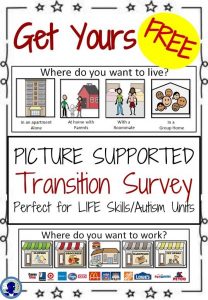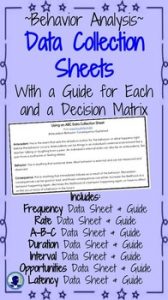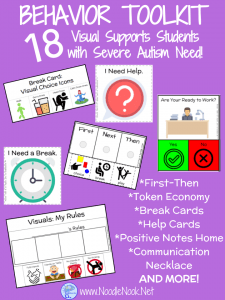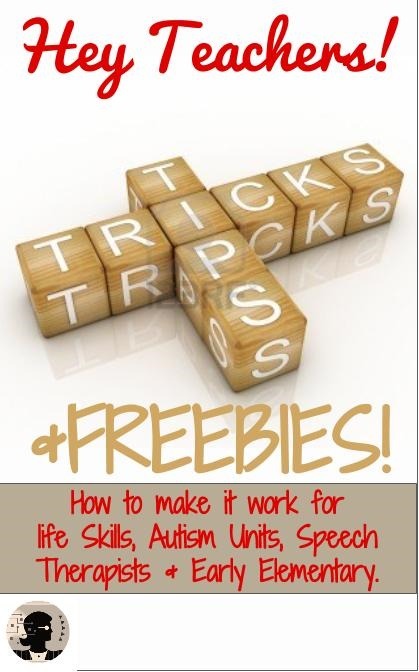The Supreme Court found that we need to do more than de minimis… but what does that even mean?
5 Ways to Guarantee you’re more than minimus to keep your IEPs out of court!
Supreme Court Ruling in a Nutshell
Several federal laws established how we educate students with significant disabilities. That includes IDEA (the Individuals with Disabilities Education Act) and FAPE (Free Appropriate Public Education). The United States Supreme Court heard the Endrew F. vs. Douglas County School District case and ruled providing FAPE requires we “enable the child to make progress appropriate in light of his circumstance”.
That, my friend, is as clear as mud. I have heard campus administrators, classroom teachers, and parents of students with disabilities all talking about how this ruling will revolutionize how we educate students with significant disabilities. I, however, am not sure there will be much of a change.
In order to shed some light on the subject, let’s break this down.
What is this Case About?
Most of us have heard about this case in our social media feeds, on the news, and in the halls of our schools. Not sure you have all the facts? Endrew is a student with Autism whose parents felt he was not making meaningful gains at the public school he attended. They withdrew him and placed him in a private school. While enrolled there, Endrew was able to make gains. His parents petitioned the school to pay for the private school’s tuition since the education they provided did not meet the standard of FAPE.
The school district refused, stating they met the standard outlined and, when the lower court sided with the school district, the case was appealed to the Supreme Court. This ruling overturns the lower court’s ruling and holds that “appropriate” goes further than the standard held by the lower courts.
The SCOTUS has sent the case back to the lower court in light of the meaning of FAPE. The lower court will now reexamine the case to see if, in Endrew’s case, he was offered more than de minimis.
–
–
What is Minimis?
With all this talk about how we teachers have to do more than the minimis for students in Autism Units and in classes for severe and profoundly disabled for fear of getting sued, what exactly is the minimis?
I can remember back to when classes for the severely disabled included almost all functional skills and hardly any academics. The IEP goals that were written for students were not ambitious and were often very subjective. It was difficult to measure growth or to really determine the path of growth or what the final outcome was meant to be for a student.
Now that we’ve seen standards-based goals and instruction brought to the forefront for students with significant disabilities, it’s time for us to examine how we write IEP goals and plan for transition so that we’re never accused of just providing an minimal educational benefit to our students.
De minimis is summed up as something “more than nothing”.
[dt_gap height=”10″ /]
So What’s More than Minimis?
The Supreme Court has ruled we have to do more. Just saying we aren’t doing nothing isn’t enough. Now we must have our students making progress in light of their disability.
The crux of this case was really the failure of the IEP committee to propose IEP goals that demonstrated forward momentum. The committee was rolling over goals year after year which gave the appearance that the student was not making any progress. If I were that parent, I probably would have felt the same way.
The Supreme Court weighed in on what our IEP goals should convey. They suggest IEPs must be “reasonably calculated to enable the child to make progress appropriate in light of his circumstances”. And that is a single sentence that packs a wallop. Minimis no more… Appropriate progress, here we come!
–
Just Like Their Non-Disabled Peers?
The Supreme Court was very clear that students with disabilities are not expected to achieve a much higher standard proposed by the parents… one which would require students achieve academic success, self-sufficiency, and the ability to contribute to society at a level equal to their non-disabled peers. But what do goals that are “appropriately ambitions” look like?
The truth is many states, through lower court decisions, have already established specific guidance in ‘more than de minimis’ progress. In the state of Texas, IEPs must “produce meaningful educational benefits both academically and behaviorally” (Cypress -Fairbanks Indep. Sch. Dist. v Michael F. 118 F.3d 245, 5th Cir 1997).
“The standard of more meaningful than just above trivial is the norm today,” says the National Association of State Directors of Special Education.
WIth that in mind, it is a wonder how much this ruling will significantly change the way FAPE is executed across the country for students with significant disabilities.
[dt_divider style=”thick” /]
[dt_divider style=”thick” /]
[dt_gap height=”10″ /]
Okay, What Does This Mean For Me?
As a classroom teacher just trying to make it to the end of the day, week, and year, what does all of this mean for you? There is one critical lesson that we learn from this Supreme Court ruling. As a classroom teacher and case manager working on a IEP paperwork, it is crucial that students don’t repeatedly rollover IEP goals without discussing in the paperwork the reason they’re unable to meet their goals. Remember, we write goals in light of the progress a student is reasonably able to make in a year. If you write a goal and one, two, or even three years go by and a student is still unable to achieve that goal it does not pull into question the students intellect, performance, or overall ability, instead it calls into question the instruction that they’re being given on a day-to-day basis.
[dt_gap height=”10″ /]
If you take nothing else from this Supreme Court ruling, do these 5 things to make sure you stay on the right side of the law and your teaching license stays intact:
- Have benchmark data to show where a student is starting from. In order to write reasonable goals that students can achieve in the course of a year you need to have benchmark data.
- If a student does not master a goal, update it during annual meetings to reflect what the student is currently able to do and where they can reasonable get to in a year.
- Write goals that incorporate the student’s transition plan and supports their post-secondary goals. And ask parents what their plans are in the post-secondary to keep them involved.
- Don’t, I repeat don’t, roll goals over and over and over without addressing why somewhere in the paperwork and adjusting the criteria to make the goal more realistic. Repeating goals over and over again without adjusting may not be okay because it doesn’t move a student forward. Besides, if they didn’t get it in one year, what are you going to do to get them to do it in two?
- Be sure the student’s strengths, needs, and current performance are reflected in the IEP paperwork. If a goal is unmastered, the why needs to be noted somewhere… was it a change medication? Rigor of curriculum? Attendance an issue? And if no reason can be pinpointed, was the goal appropriate in the first place?
[dt_gap height=”10″ /]
[tweetthis]The Supreme Court found we need to do more. 5 Ways to Guarantee you’re more than minimus![/tweetthis]
Remember This…
You have quite a bit of latitude when it comes to IEP goal writing and classroom instruction. Your school district will likely back you in whatever choices you’ve made as a case manager. What you always need to have is a very clear, logical, and convincing explanation for the decisions make in an IEP meeting demonstrating you’ve enabled a student to make reasonable progress in light of his circumstances.
This may go without saying, but all of this means nothing if you are not delivering good instruction in the classroom with the Least Dangerous Assumption in mind and all while Presuming Competence. You have to believe your students can learn and deliver them a quality education with academic standards. No district can stand behind you if you fail to educate children. But you read this blog- so you’re all good.
Now teach on… with lots of educational benefits to students!
[dt_gap height=”10″ /]









